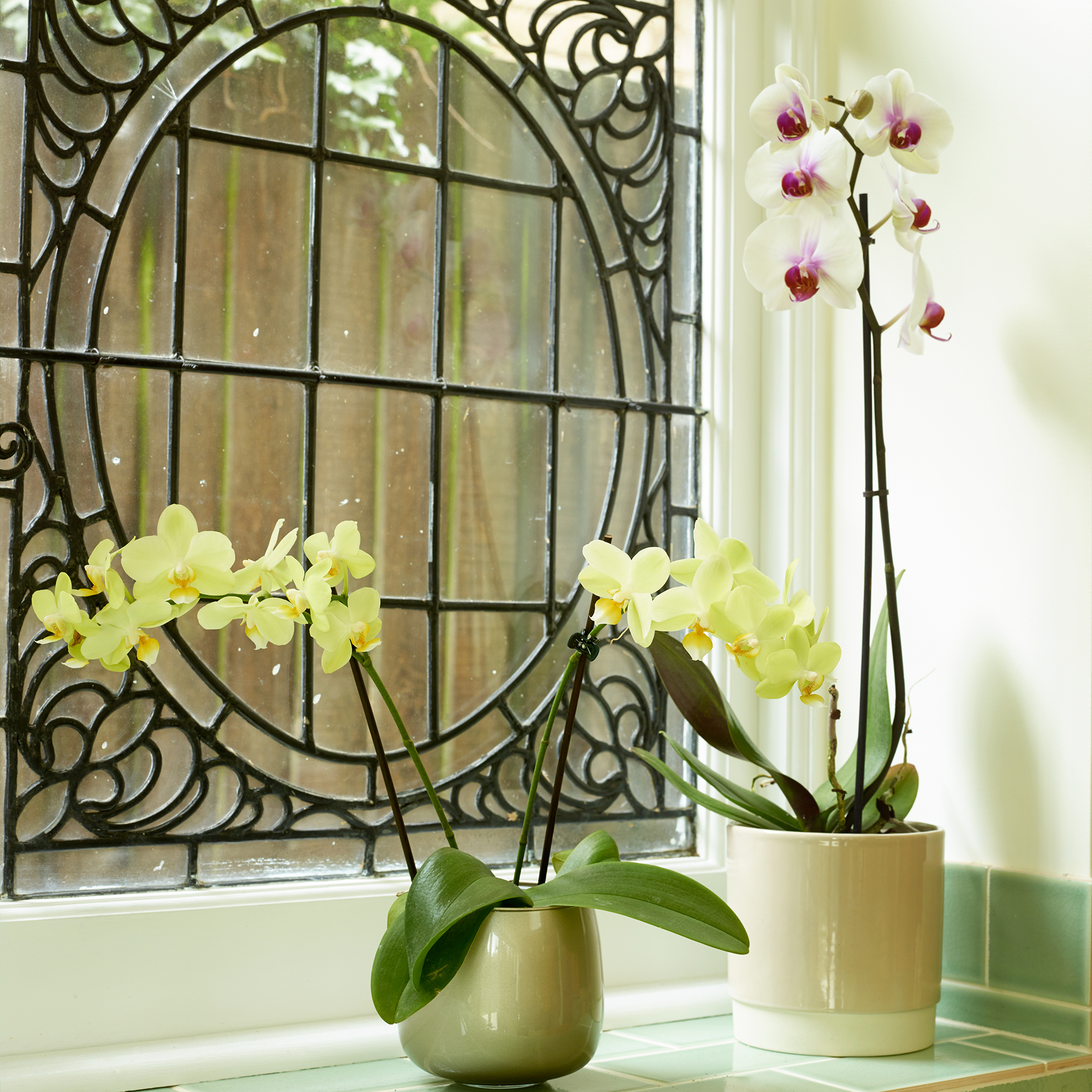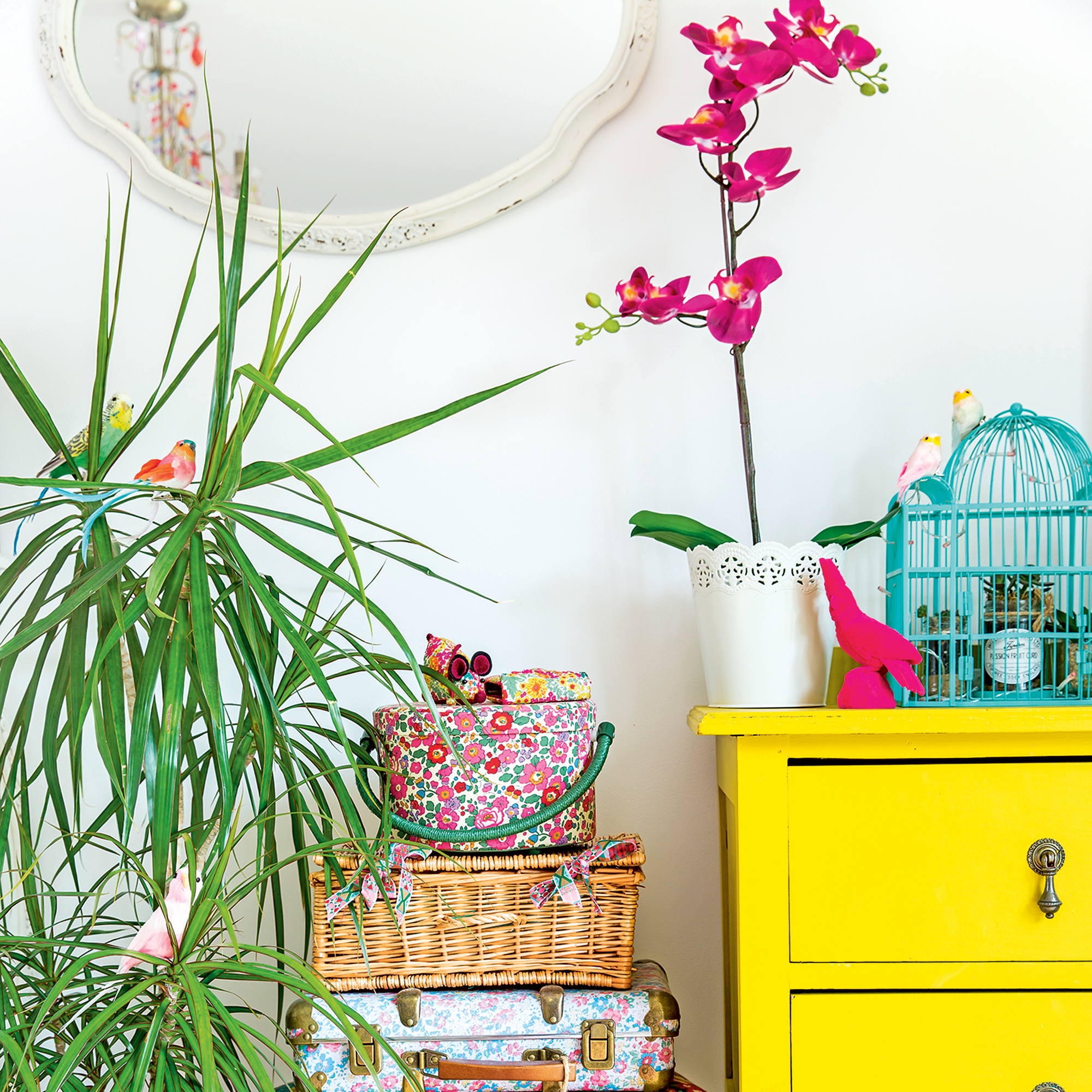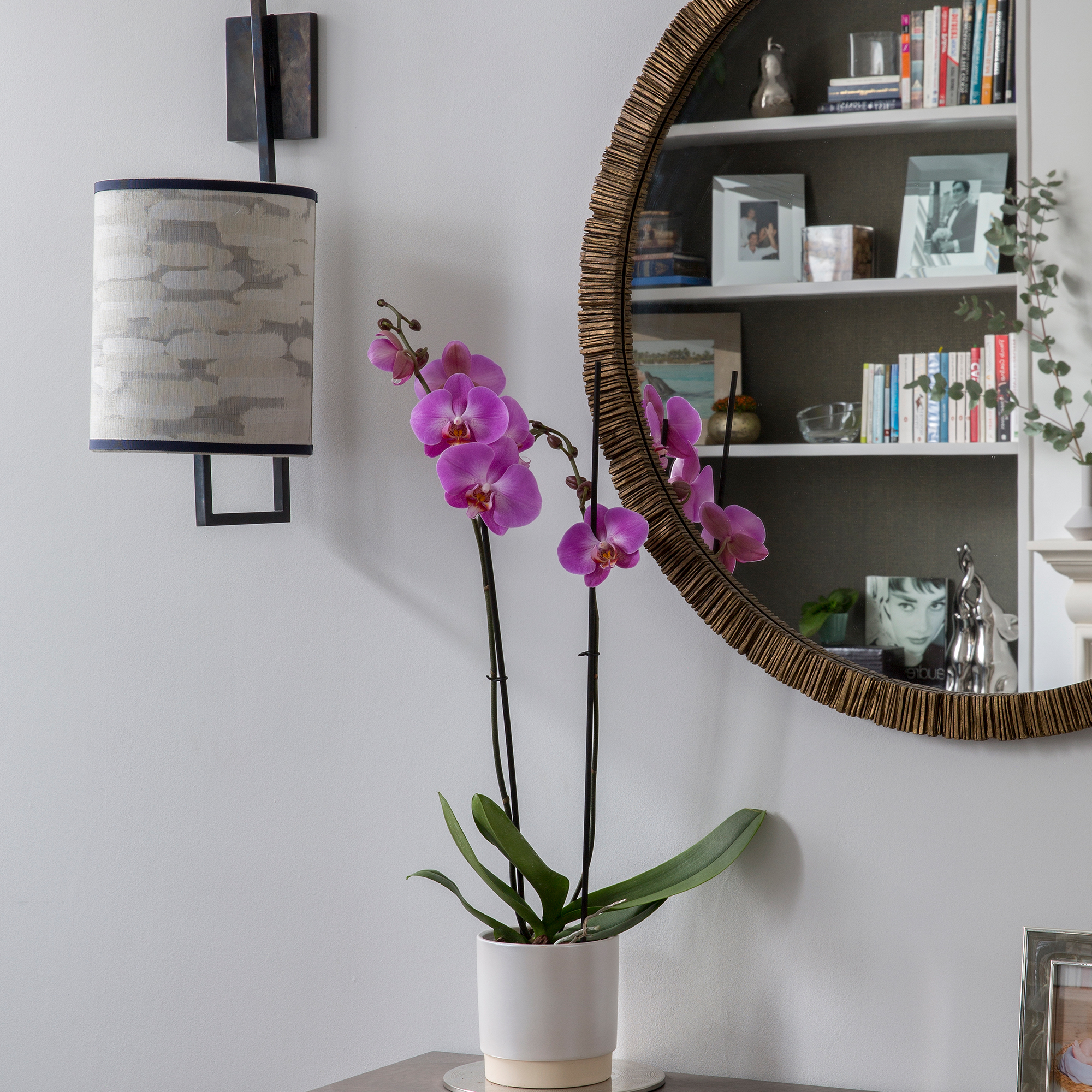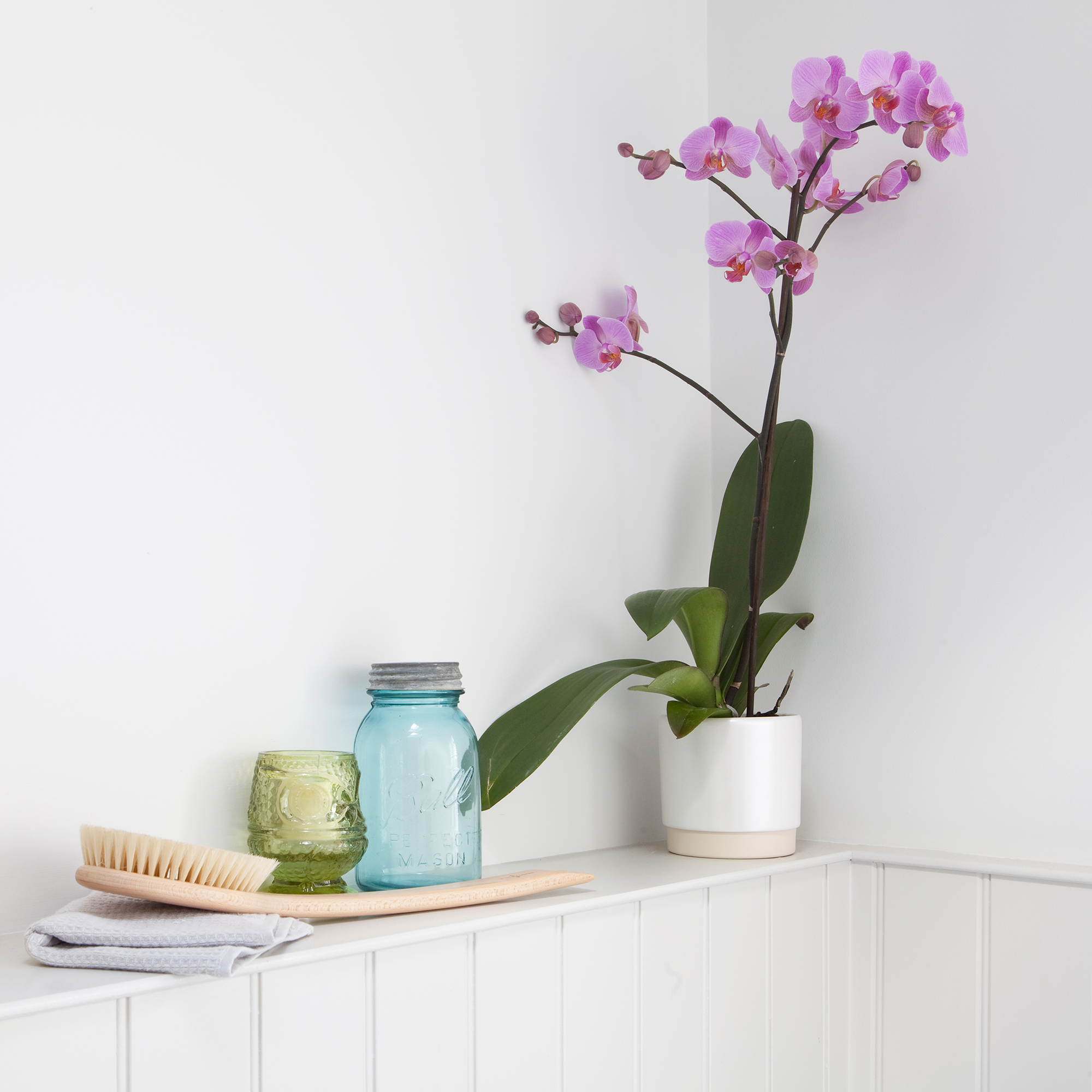
Aa they're famed for their beauty and delicate flowers and leaves, it can be a real shame when your orchid starts to look a little worse for wear. And if your orchid is looking a little lacklustre right now, you may be wondering: Why are my orchid leaves turning yellow?
If you want to successfully grow happy and healthy orchids, you need to know how to care for an orchid. You need to know the ins and outs, from how long orchids live to how to prune orchids. But although you can try and do everything by the book, there will always be some situations that leave you stumped.
Having yellow orchid leaves is one of those situations. But why do orchid leaves turn yellow? And can they be fixed? Well, we decided to do the research so you don’t have to, and below, you’ll find everything you need to know on what causes this and what you can do to help.
1. It’s making space for new growth

While it’s normal to worry about your orchid leaves turning yellow, it’s important to understand that this isn’t necessarily a bad thing. In fact, this may just be a step in its natural life cycle and could result in even bigger, better growth next year.
Morris Hankinson, Director of Hopes Grove Nurseries, explains, ‘Older orchid leaves will turn yellow, shrivel up and drop off. This is a natural process and allows for new growth. So if your orchid is older, this could be the reason why.’
If this is the case, there’s nothing you need to do, and your orchid doesn’t need help. Let it do its thing, and let the leaf naturally drop off when it’s ready. But if you have a young orchid or your orchid is showing other worrying signs, it may be that there’s a bigger issue at hand.
2. It’s been overwatered

It’s incredibly easy to make garden watering mistakes, and this includes your indoor plants, too. And if your orchid leaves are turning yellow, there’s a chance that you may have gone a little too hard with your watering can.
‘Overwatering is one of the most common reasons for yellowing leaves,’ explains Morris. ‘Killing orchids with kindness is a thing! Always check the roots of an orchid to see what colour they are before watering. If the roots are green, no water is needed, but if they are grey and the orchid bark is dry, then the orchid can be watered.’
Remember that orchids don’t necessarily need as much water as some of your other houseplants. The general rule of thumb is that they should be watered once every 1-2 weeks or when the roots show these visible signs.
3. It’s getting too much sun

Growing orchids can be fiddly, as they have very specific growing requirements - especially regarding their growing location. And if you don’t get this right, your orchid leaves may turn yellow due to scorching.
David Denyer, Flower Expert at Eflorist explains, ‘Orchids can get a little sunburned if they’re in too much direct sunlight, which can cause their leaves to yellow or brown. If you think this might be the issue, try moving your orchid to a spot with bright but indirect light. You could even use a sheer curtain to help soften the sunlight.’
You’ll normally be able to tell whether your yellow orchid leaves have been scorched, as they’ll also be extremely dry and crusty. And if you spot this is the case, move your orchid immediately and it should recover.
4. It’s struggling with temperature changes

As well as placing them in indirect sunlight, you also need to grow orchids somewhere that offers desirable and consistent temperatures. After all, orchids are very susceptible to heat stress - especially if they’re not misted regularly to maintain the humidity they love so much.
Morris says, ‘Temperature ideally needs to be consistent for Orchids, so any sudden changes can put the Orchid under stress. Try to keep the temperature around 20°C in the day and no lower than 10°C at night.’
So, if you spot that your orchid leaves are turning yellow and you’re concerned that temperature changes may be the cause, it’s best to test the temperature and move it elsewhere if required. Within a few weeks, it should be back to its normal self.
5. It’s diseased

Unfortunately, no plant is immune to disease, and disease is another reason why orchid leaves turn yellow. You’ll normally be able to tell whether your orchid is diseased or not, though, as the leaves won’t just be yellow - they’ll also start to turn brown or black.
Fungal orchid diseases tend to show themselves on the underside of leaves first before spreading to the topside of the leaf, and bacterial orchid diseases also make the leaves smell. So, you won’t be able to miss them.
If you spot any of these signs, you should immediately move your orchid away from your other houseplants and cut off the infected leaves with clean, sterilised snippers. You should then spray with a fungicide or hydrogen peroxide. Just make sure that you don’t use this on any other plants.
6. It doesn’t have enough nutrients

You probably start to look a little peaky if you haven’t eaten anything in a while, and the same can be said for orchids if their leaves start to turn yellow.
David says, ‘Orchids need a certain balance of nutrients to stay happy. If they’re missing something, like nitrogen or magnesium, their leaves can start to yellow. Using a balanced orchid fertiliser during their growing season should help. Just follow the instructions on the label, and you’ll be good to go.’
It’s also a good idea to check for nutrient deficiencies in your soil and fix them accordingly. In most cases, this can be done by choosing an orchid potting mix over normal houseplant compost.
What you'll need
If your orchid leaves are turning yellow due to nutrient deficiency, this orchid food should perk it up. One feeder lasts 30 days, so you'll be set for a while.
Orchids need sufficient water and humidity to stop the leaves turning yellow, and this mister can provide that for your beloved orchid plant.
Any diseased, yellow orchid leaves should be snipped off to avoid infecting the rest of the plant - or any other plants nearby. You can use these snips to do just that.
FAQs
Should yellow orchid leaves be cut off?
This all depends on the reason why your orchid leaves have turned yellow. If they are old, been scorched, overwatered, or suffering from heat stress, you can leave the yellow leaves on the plant. In time, they will fall off of their own accord and a new leaf should grow in its place.
If your yellow leaves are diseased, though, you should cut them off as soon as possible. This will help to stop the disease from spreading or infecting any plants around it. You should do this will sterilised snippers and dispose of the infected leaves immediately.
Where is the best place to put an orchid in your house?
As orchids like bright, but indirect light, you should ideally place your orchid in a east or west-facing window. The windowsills of kitchens or bathrooms are often popular, as they also offer the humidity that these tropical plants like. However, don’t choose this location if these rooms get too cold.
If you choose to put your orchid in another room, though, you can create this humidity by misting the plant every so often.
If your orchid leaves are turning yellow, you need to act fast to make any necessary changes to their growing conditions.







